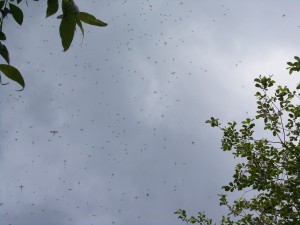
May is the fastest time of Nature’s year. What a difference a few days make! Last time at Wraysbury, a few sluggish mayflies sitting around as if waiting for something to happen in a one horse town.
Well, today it’s happening. In places, the sky is filled with rising mayflies: a few mating, most alone. Here and there, some repeatedly dance up, and a few seconds later, down; but most just climb, and fly about, seeming frail on their large wings, their triple tail streamers hanging below them: it’s worth zooming in on the picture. Even better, here’s a short video clip. The soundtrack combines an airliner taking off and a Blackcap singing.
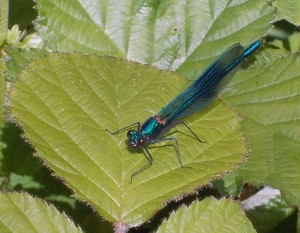
One of the glories of summer by water is the brilliant turquoise and green iridescence of the male Banded Demoiselle – the so-called band is actually the appearance of flickering of the wings, the dark spot on each of the four wings giving a hard-to-describe semblance of a sparkling blue jewel in flight, with bands of colour too fast and changeable for the eye to understand. But he’s pretty fine at rest, too.
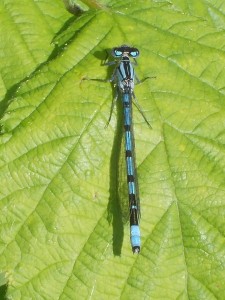
Common Blue, Bluetail, and Red-eyed Damselflies have all now emerged, the Red-eyed being the scarcest of the three, seemingly.
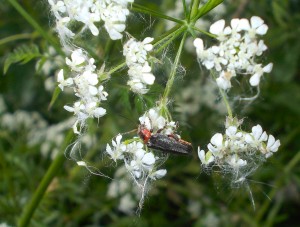
On the Cow Parsley were, as well as the damsels, two cantharid Soldier Beetles, Cantharis rustica or a close relative. Another enormous cloud of rising mayflies, and suddenly behind them a pair of Hobbies, hawking for insects – whether damselflies or even mayflies is impossible to tell. One comes close, wheels away on scything wings as it sees me.
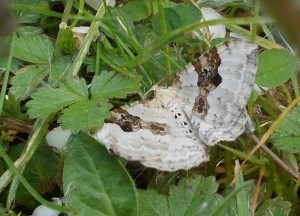
A Silver-Ground Carpet Moth, Xanthorhoe montanata, flutters weakly past me among the Hawthorn bushes and flops onto the grass. Garden Warblers sing, a Whitethroat rasps in its songflight. A Treecreeper sings its little ditty sweetly from near the river.
On the hill, three Greylag and two Egyptian Geese form a peaceful flock. Stock Doves and a mixed flock of Crows and Jackdaws rise from the grass. A Song Thrush gives a marvellous solo recital near the road.
